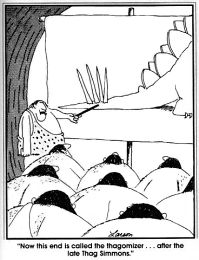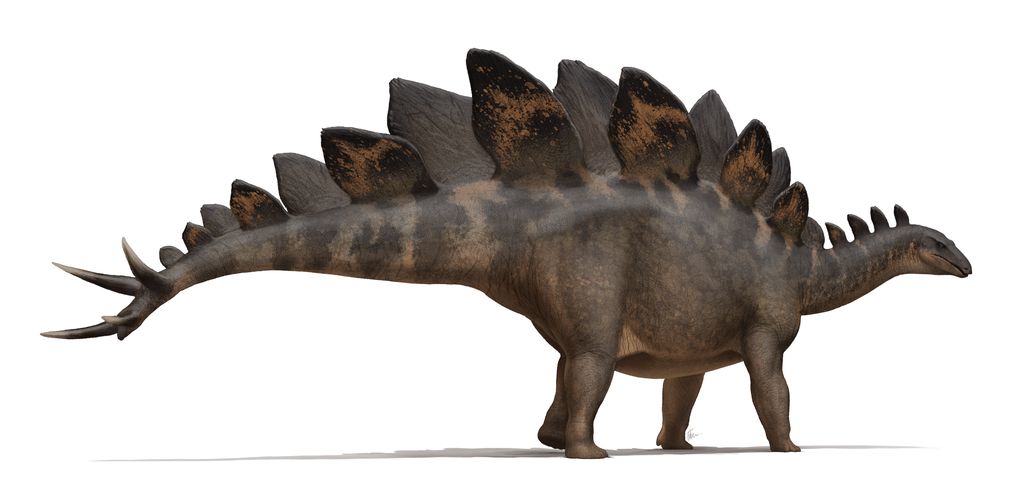
20 November 2023
For those who love dinosaurs, Stegosaurs are a recognizable favorite. These plant-eating armored animals wore rows of raised plates on their backs and spiky tails to protect them from the carnivores, especially the Allosaurus, a theropod ancestor of modern day birds.
When threatened, the Stegosaur swung its tail to batter its attacker with the spikes.
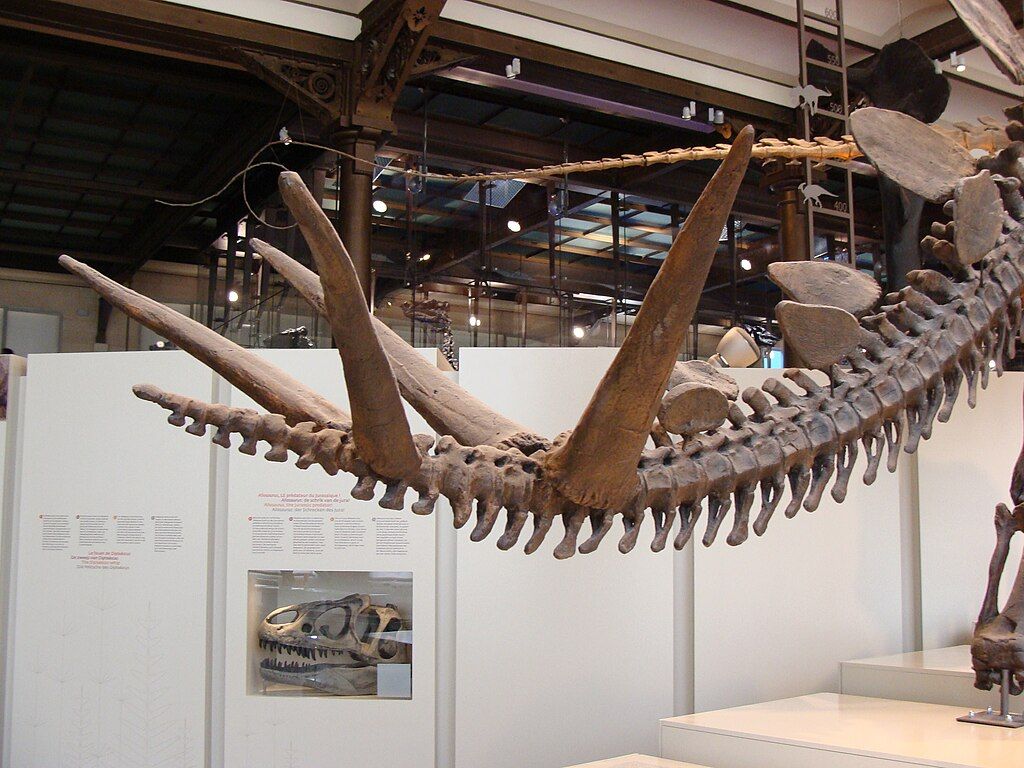
This display at the Denver Museum of Nature and Science shows an Allosaur ready to bite a Stegosaur while two Stegosaur young run beneath her. Look closely in the background and you can see that the end of her tail — the spikes — are out of sight as they swing at the Alloasaur’s back.
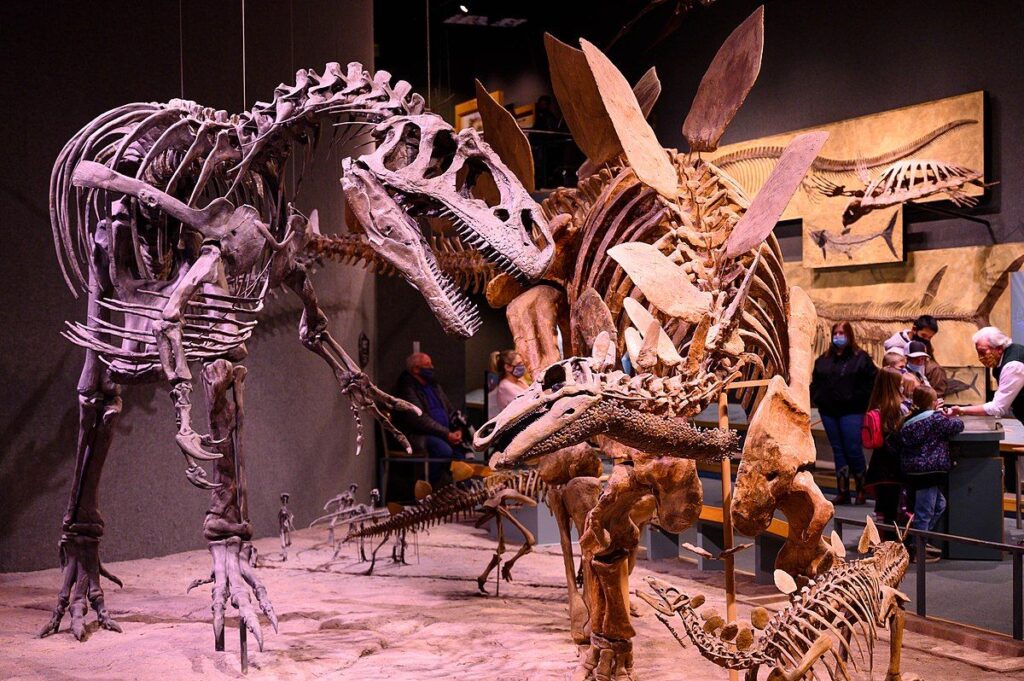
When paleontologists were puzzled by a hole in this Allosaur vertebrae (at left) they figured out that a Stegosaur spike fits the hole (at right). Bone piercing bone in real time. Ouch!
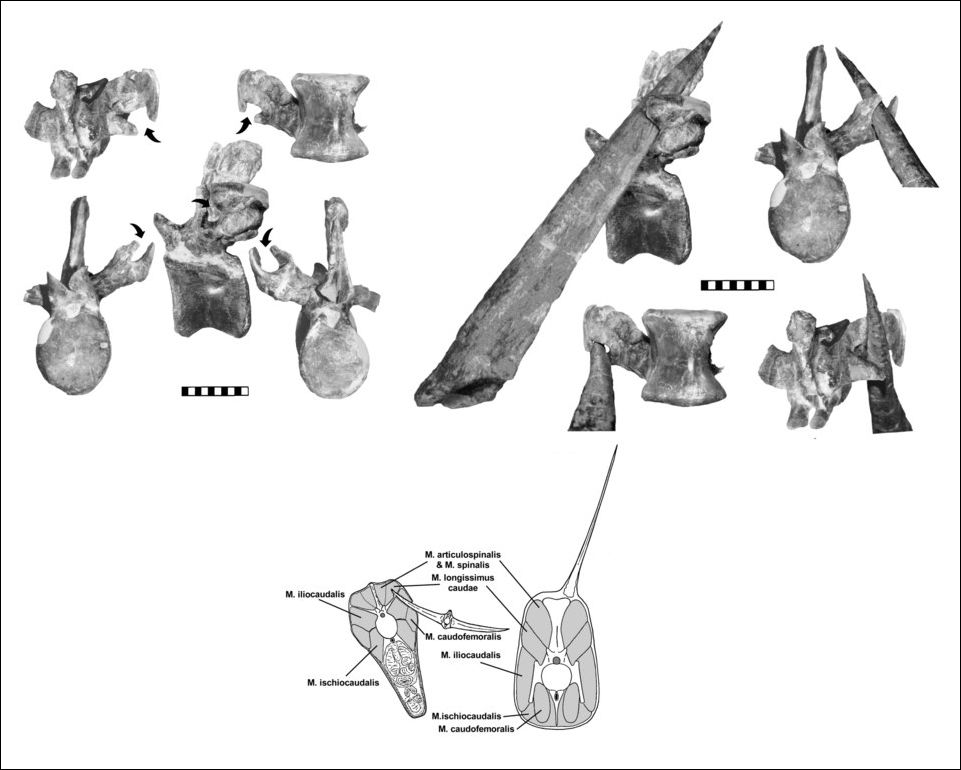
The arrangement of the tail spikes had no name until “Kenneth Carpenter, then a paleontologist at the Denver Museum of Nature and Science, used the term when describing a fossil at the Society of Vertebrate Paleontology Annual Meeting in 1993.” — quote from Wikipedia.
The name came from a Far Side cartoon in 1982 when Gary Larson invented it as a joke. “Now, this end is called the thagomizer … after the late Thag Simmons.”
The name caught on and is now official.
A thagomizer is the distinctive arrangement of four spikes on the tails of stegosaurian dinosaurs. These spikes are believed to have been a defensive measure against predators.
— Wikipedia: Thagomizer account
The rest is history.
Watch out for that thagomizer!
(credits are in the captions. Tip of the hat to Jonathan Nadle who told me about the thagomizer.)
